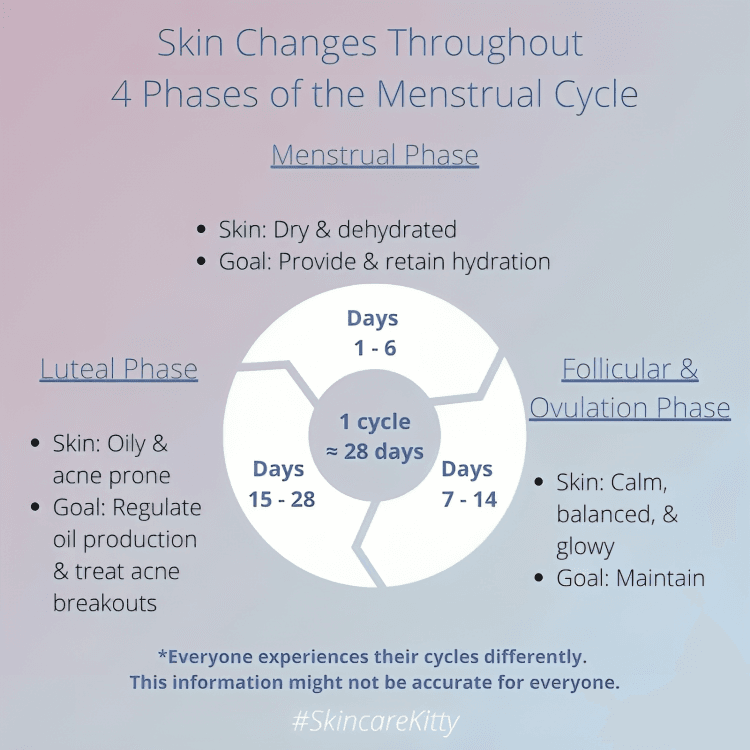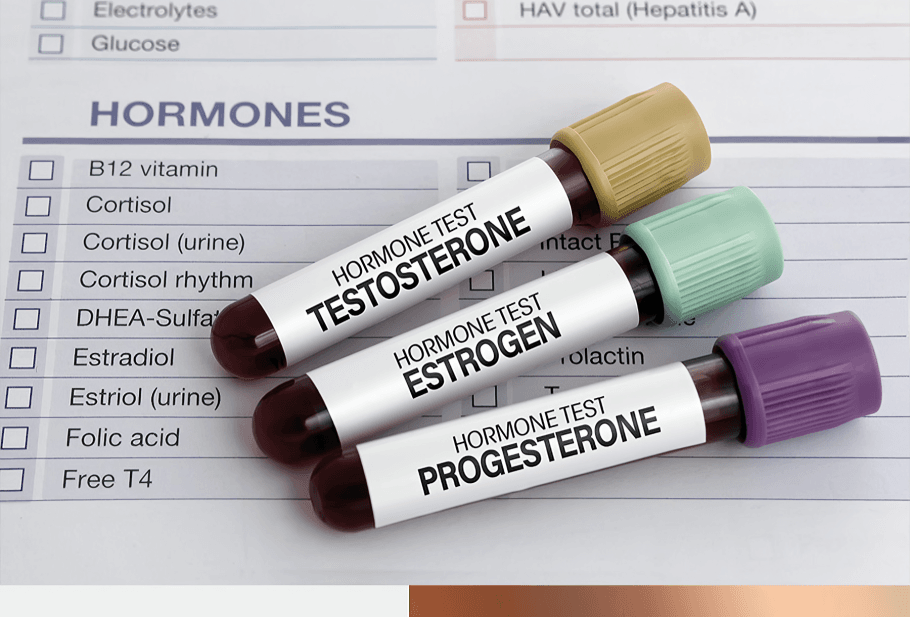
“
Understanding how hormones affect skin and hair health is essential for uncovering the hidden links between our internal systems and outer appearance. Hormones, such as estrogen, testosterone, and cortisol, play vital roles in regulating oil production, hair growth, skin elasticity, and even inflammation. Imbalances can lead to acne, dryness, hair thinning, or unwanted hair growth. 1
1
”
Estrogen promotes collagen production and skin hydration, maintaining a youthful appearance. Lower estrogen during menopause makes skin thinner, drier, and more prone to wrinkles and sagging. 1
Androgens like testosterone stimulate sebum (oil) production in the skin. Excess levels can lead to clogged pores, resulting in acne, particularly around the chin, jawline, and back in both teens and adults. 2

Progesterone, often elevated during the luteal phase of the menstrual cycle, can cause puffiness and oiliness in the skin and contribute to premenstrual acne in many menstruating women.
A decline in estrogen during menopause contributes to slower hair growth, increased hair thinning on the scalp, and dryness, while some women may develop coarse facial hair due to androgen dominance. 3
Insulin resistance, often linked to conditions like polycystic ovary syndrome (PCOS), can elevate androgen levels, which leads to acne and thinning hair on the scalp—especially around the crown. 4
Thyroid hormones help regulate skin hydration and hair follicle activity. Hypothyroidism often causes dry, pale skin and hair loss, while hyperthyroidism may lead to thinning hair and warm, sweaty skin. 5
The hormone DHT (dihydrotestosterone), a derivative of testosterone, is closely associated with male and female pattern hair loss. DHT shrinks hair follicles, shortening the hair growth cycle. 6
Low levels of growth hormone in adults may reduce the skin’s ability to repair itself. This can slow down healing, reduce collagen synthesis, and contribute to skin aging and loss of elasticity. 7
Chronic stress raises cortisol levels, affecting skin clarity and pushing hair follicles into rest mode, causing stress-related hair loss known as telogen effluvium. 8

Hormonal imbalances can boost melanin in specific areas, leading to hyperpigmentation—common in conditions like Addison’s disease or pregnancy-related melasma.
Adrenal disorders raise cortisol and androgens and can severely impact skin and hair. Overproduction of androgens may cause acne, oily skin, and unwanted hair growth in both men and women. 9
Perimenopause, the transitional phase before menopause, brings fluctuating estrogen and progesterone levels that lead to unpredictable changes in skin texture and increased sensitivity. 10
Some women experience hirsutism—excess hair growth on the face or body—due to elevated testosterone or androgen sensitivity. This can result from PCOS, tumors, or hormone-altering medications. 11
Sebaceous glands in the skin are highly responsive to hormonal signals. An overactive response to androgens often causes clogged pores and acne, while a decline can make the skin feel rough and dry. 12

Hormone replacement therapy (HRT) in postmenopausal women can improve skin hydration and reduce the appearance of wrinkles, showing how closely hormone levels influence visible skin aging.
High levels of prolactin, a hormone responsible for milk production, can disrupt the balance of other hormones and cause hair thinning, especially in non-lactating individuals with underlying health issues. 13
Testosterone therapy in transgender men often results in thicker body and facial hair growth but may also trigger acne and scalp hair thinning due to increased oil production and DHT sensitivity. 14
Sudden drops in estrogen after childbirth cause temporary hair shedding, known as postpartum telogen effluvium. Hair typically regrows within six to twelve months once hormone levels stabilize. 15
Hormonal treatments for conditions like endometriosis or infertility can have noticeable effects on the skin and hair, including acne, thinning hair, or sudden changes in hair texture or skin pigmentation. 16
German physician Rudolf Virchow, father of modern pathology, noted that hormonal issues often first show through changes in skin tone, hair growth, or texture—revealing deeper imbalances in the body. 17


